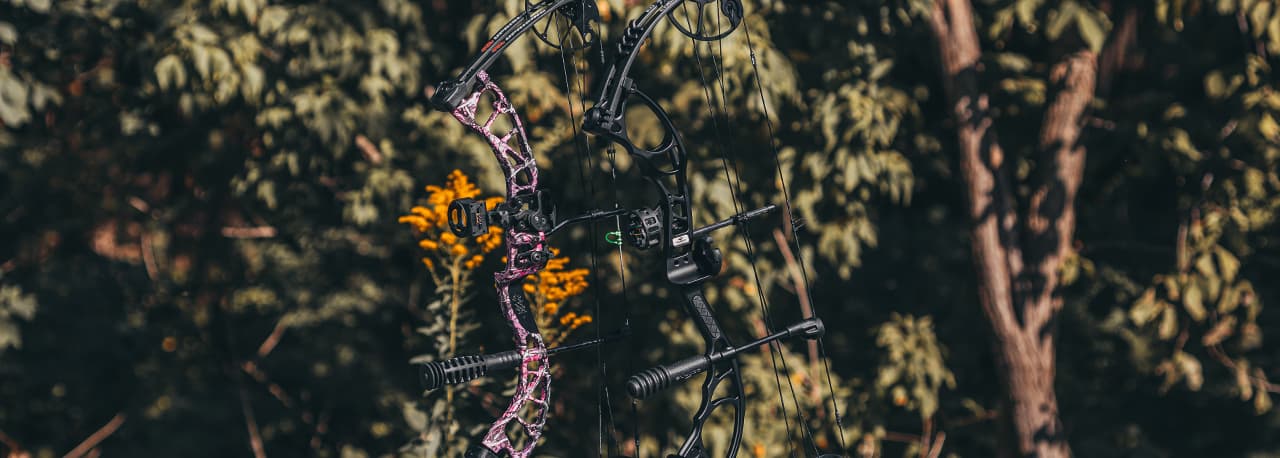
Getting into archery can be a fun and exciting experience, but it's important to know the details of the equipment you need. Choosing the correct bow is a crucial step to getting started.
In the process of buying a bow, there are many things to consider; type, size, power, speed, and budget are just a few. In this shopping guide, we want to help you understand the different types of bows and other features of most bows.
The type of bow you choose will largely depend on your level of experience and personal preference. In archery, there are three main types of bow: compound bow, recurve bow, and longbow. Here are the differences between them:
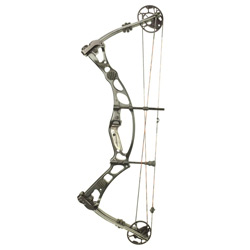
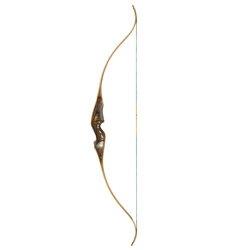
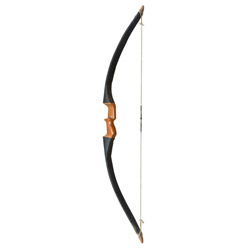
"Beginning archers should consider looking for a bow with a significant range of adjustability up or down in draw weight and draw length. Such as all-in-one compound bows with ready-to-hunt gear that often include everything you need to get started."
Before you buy a bow, you'll need to know what draw length and weight will work best for you. Your draw length is the distance your arm needs to be able to reach to draw the bow back, while draw weight is the amount of force needed to pull the bow back.
To determine your draw length, you'll need a measuring tape and a simple calculation. Start by measuring your wingspan, or the distance from middle fingertip to middle fingertip with your arms stretched out to each side. Then use the calculation (Wingspan divided by 2.5) and then round up to the nearest half an inch. So if your wingspan is 68 inches, your draw length will be about 27.5 inches.
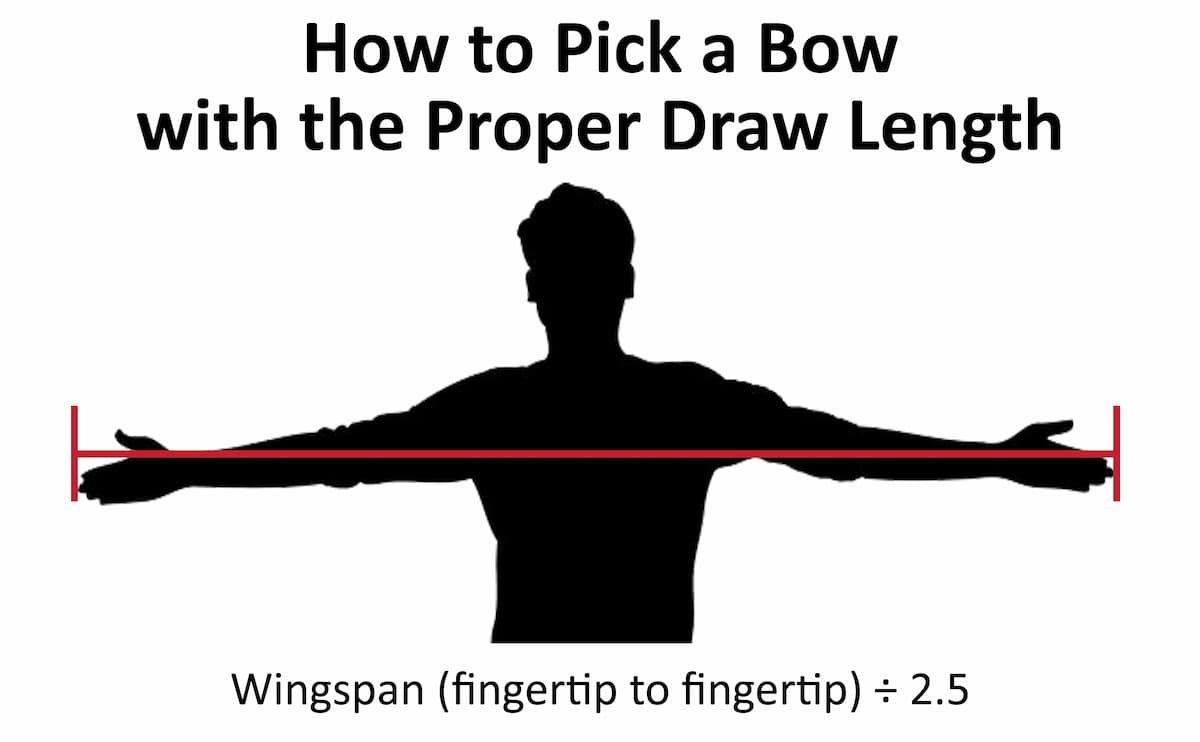
Once you have determined your draw length, you'll want to choose a bow that matches. Using a bow with an incorrect draw length can lead to poor shooting form, discomfort, and possible injury. It's important to select a bow that matches your needs and specifications to avoid issues and have an enjoyable shooting experience.
Next, you'll want to determine the appropriate draw weight. Make sure to choose a comfortable draw weight because using a bow with a draw weight that's too heavy will cause fatigue and poor accuracy.
Most adult bows have a draw weight range of 20-70 lbs. It is recommended that a beginner archer start light and work up to heavier draw weights as you get stronger and gain experience. A general rule of thumb is to choose a draw weight that is around 25% of your body weight. This is not a strict guideline, and individual factors should be considered. Also, you should consider the activity you're planning to do because hunting requires a heavier draw weight than target shooting. Check local and state laws for your hunting area for minimum draw weights needed for hunting.
The draw cycle is the transition from when you first begin drawing the string to the point you reach full draw. You want a smooth draw. If you struggle with your draw and need to jerk the string, it could affect your accuracy.
The let-off of the bow is the amount of energy that the bow releases once it reaches full draw. Recurve and longbows are easy to pull at first and get harder to pull as you reach the full draw. While compound bows start heavy and trail off.
A recurve or long bow starts out at zero. When you pull the string back, it gradually gets heavier and heavier the further you pull back the bow. At the end of the draw, you are holding the full weight. So if your bow has a 60 lb draw, you start pulling at zero and end up holding 60 lbs at full draw. Many archers prefer this style of bow because it starts easy, and they can build up their strength as they use it.
Compound bows, on the other hand, are hard to pull at first but get easier as you draw. For example, a 60 lb draw starts at 85% let off, which means you will be holding 9 lbs of draw weight when it's fully drawn. If you are new to compound bows, the draw cycle uses major muscle groups, and it's common for someone to struggle to pull their bow back for the first few days before you train those muscle groups to function together. It will get easier as you spend more time practicing, so don't give up too soon, but keep at it.
If you know the maximum draw weight you can pull, just reduce the number by 10 lbs, and you can be reasonably assured that you'll have a smooth draw cycle. If you're looking at a tradeoff between draw weight and arrow delivery speed, the rough estimation is that every inch of draw length is equal to approximately 10 feet per second of arrow speed. So if the draw weight is too heavy and you're struggling to fully draw your bow, it'll translate to lower performance with less arrow speed.
To make the draw easier, don't force yourself to use your maximum draw weight on your bow. Instead, use a lighter draw weight to focus on form and performance. It'll improve your draw cycle and keep things nice and smooth. You can always work up to a heavier draw weight later if you want to increase your skill level.
The brace height is the distance between the archer's grip and the string when at rest. A shorter brace height increases speed, is less forgiving accuracy-wise, and increases the potential for string slap (which is where the string smacks the shooter's forearm). A longer brace height is more forgiving because the string does not have to travel as far from our draw length to the point that it stops. A 30-inch draw length or longer will give you the smooth draw cycle you want. The advantage of using a longer bow is that it keeps the string angle from being too severe and provides stability when aiming.
Generally speaking, your brace height should be between 6-7 inches for recurve bows and 7-8 inches for longbows. If you use a recurve bow with adjustable limb pockets and risers, you can adjust the brace height by changing to different limbs or adjusting the limb pockets on the risers. Compound bows also have adjustable brace height.
Bow grips affect the way you hold your bow. Good grips can prevent canting and hand fatigue. If the grip on the bow isn't to your liking, you can customize it with a wrap or tape. If you want to shoot competitively or hunt with your bow, it's even more important to make sure your grip is secure and comfortable.
A mechanical bow release is a device that helps to ensure consistency and accuracy in your shots. A bow release is essentially a trigger that you use to release the string, as opposed to using your fingers. When it comes to choosing a bow release, there are several options available, each with its own unique benefits. The most popular types of bow releases are wrist releases, handheld releases, thumb releases, and index releases.
Wrist releases are attached to a strap that goes around your wrist, making them a popular option for beginners as they are easy to use. Wrist straps offer the convenience of being attached to you, so don't drop it accidentally while shooting and hunting. And you can use your arm and shoulder to hold the bulk of the weight when you pull back your string, leaving your hand free to move. These straps are typically adjustable, allowing you to adjust the tension and find the best fit for your needs. They require less time when transitioning between shots, making them an ideal choice for target shooting when looking for speed and precision. The release lever will either be an index finger trigger or a thumb release. Index finger releases are more like a trigger and offer a more natural feel for some archers, especially those coming from the gun world.
Handheld releases, on the other hand, provide more stability but require more time between shots for proper setup. They are beneficial for hunting because they don't require adjusting before each shot. They tend to be more popular with experienced archers who want more control over their shots. The handheld release usually has a thumb lever because, with a handheld release, you have to rely on your hand to draw the bow and hold the weight leaving only your thumb free to move to hit the trigger.
When choosing a release, consider what feels most natural and comfortable in your hand and what kind of archery you plan to do. For instance, if you're planning on hunting, you may want to opt for a wrist release as it is easier to use in the field. On the other hand, if you plan on shooting targets, a handheld release may be more appropriate as it offers more control.
If you're right-handed, you'll want to purchase a right-handed bow. This means you'll hold the bow in your left hand and draw with your right. If you're left-handed, you'll want to get a left-handed bow. You will hold the grip of the bow in your right hand and draw with your left.
When shopping for a bow, it's not just about having a bow and arrows, but adding the right accessories can make a world of difference in your shooting accuracy and overall experience.
Sights are an essential accessory for archers to improve accuracy. Different types of sights exist but they all aim to help align shots accurately. Multi-pin sights with adjustable pins for different distances are preferred by many archers. Sights can adjust from zero to three axes depending on the shooter's needs. Beginners can use 2-axis sights while hunters benefit from 3-axis sights for angled shooting. Regularly checking that the sight is level is important as an unlevel sight can throw off visual cues and reduce accuracy. In summary, investing in a high-quality sight and practicing with it regularly can significantly improve an archer's shooting performance.
Peep sights attach to the bowstring and help increase accuracy and precision when shooting a bow and arrow. They come in different sizes based on your needs with smaller sizes like 1/8" for steeper string angles. The correct size peep is important, with a larger one needed if you can't see your full sight through the peephole at full draw.
The placement of the peep sight on the bowstring also matters. It should align with your eye at the most comfortable position when at full draw. You then align the view through the peep sight with your front sight for the best accuracy.
Peep sights are especially useful for long-distance shooting where precision is critical. They allow you to line up your shot with greater precision, increasing the chances of hitting your target.
There are different types of arrow rests to choose from to provide support and proper positioning for your arrows. Drop-away rests are good for hunters as they provide accuracy with minimal contact to reduce noise. Whisker biscuits are ideal for beginners since they are simple to use and offer good support. Blade rests work well for target shooting due to their precise adjustability. Whichever rest you select, ensure it is installed and adjusted correctly for your bow setup as improper adjustment can lead to inconsistent shots and poor accuracy. Make the effort to configure the rest properly.
Stabilizers help archers improve accuracy and stability when aiming down a bow. They reduce float and vibration in the sight pins, dampening unwanted movement of the bow. Stabilizers can also balance out a front-heavy or back-heavy bow for improved comfort.
There are many types of stabilizers varying in length, weight, and design. Longer stabilizers provide more stability while shorter ones enable faster, more accurate shots. Heavier stabilizers absorb more vibration but can make the bow harder to handle.
The optimal stabilizer for an archer depends on their priorities. Those seeking to minimize vibration and noise benefit from a long, heavy stabilizer while archers wanting speed and accuracy do best with a short, lightweight stabilizer. Overall, archers must balance the trade-off between stability and weight. A longer stabilizer of any weight can provide similar effects to a shorter, heavier stabilizer.
An arm guard is an essential piece of equipment for archers. It covers the forearm, protecting it from painful string burn caused when the bowstring hits the arm during the shot. An arm guard allows archers to focus fully on their form, aim and shoot without the distraction of worrying about the string hitting their arm. String slap can also be reduced by adjusting the bow arm position and rotating the elbow up. Investing in an arm guard, regardless of skill level, helps archers enjoy the sport more by eliminating string burn and the distractions it causes.
Having the right arrows for your bow is essential for accuracy and consistency. It is recommended to have extra arrows as backups in case of damage or loss and for additional practice. When selecting arrows, make sure to match the arrow shafts and spine to your bow's draw weight and length as recommended by the supplier. The diameter of the field point tip and arrow nock also need to match your arrows properly. You want to make sure your arrow components have the proper fit for your arrows to ensure accuracy and consistency in your shots and the proper functioning of your arrows. Storing and transporting arrows in a quiver will keep them organized, protected from damage, and prevent them from getting lost.
A kisser button is an accessory attached to the bowstring that serves as an anchor point reference to ensure consistent placement on the face. Choosing a kisser button requires considering the material and size. Rubber and plastic kisser buttons are affordable and easy to install while metal ones are durable but reflect environmental temperatures. The size should align with the shooter's style to ensure hitting the corner of the mouth consistently with the peep sight.
There are two main types of targets for archery: bag targets and field targets. Bag targets are made of foam or cloth and are ideal for practice as they are portable and easy to set up. However, they wear out quickly if shot repeatedly in the same area, so rotating the target often extends its life. Field targets simulate real game with 3D animal shapes and are made of durable foam and rubber. Many have replaceable sections for the vital areas. Field targets are good for practicing accuracy but are bulky to transport. When choosing a target, make sure it can withstand the draw weight and length of your bow to avoid damage or safety issues from an arrow piercing through the target.
There are two primary shooting techniques; command shooting and surprise shooting. While both are effective, they differ significantly in their approach.
Command shooting is a more traditional method in which the archer knows precisely when they will release the arrow. With this technique, you control the movement and release the arrow with intention, using a specific aim point.
On the other hand, surprise shooting is a more fluid and intuitive approach. You don't know precisely when you'll release the arrow, as it is based on a set draw force that your release is automatically set to go off at. For example, your bow is set to 60 lb draw, and your release is set to 70 lbs. You pull your bow back to its set let-off point and hold it at full draw until you get close to your target, then pull back more to trigger your release. This method often results in a more instinctive and fluid shot.
While command shooting offers more control, it can also lead to overthinking and over-controlling the shot, which can hinder accuracy. In contrast, surprise shooting is a more relaxed and natural approach but can sometimes lack the precision and intentionality of command shooting.
If you struggle with "target panic" (feeling anxious when getting close to your target), it can sometimes be corrected by switching from command shooting to surprise shooting. There are several top archers in the world who use surprise shooting to maintain their composure and keep anxiety at bay.
Both techniques require practice and skill. The best approach is determined by your preferences and style. Some people even combine the two or alternate which they use depending on the situation they face at any given moment. Experiment with both techniques and see what works best for you.
Buy With Confidence
Get FREE shipping on qualifying orders! Any order $150+ with a shipping address in the contiguous US will receive the option for free ground shipping on items sold & shipped by Pyramyd AIR during checkout. Certain restrictions apply.
Free shipping may not be combined with a coupon unless stated otherwise.
View Shipping Info
We work hard to get all orders placed by 12 pm EST out the door within 24 hours on weekdays
because we know how excited you are to receive your order.
Weekends and holiday shipping times will vary.
During busy holidays, we step our efforts to ship all orders as fast as possible,
but you may experience an additional 1-2 day delay before your order ships.
This may also happen if you change your order during processing.
View Shipping Times
It's important to know that due to state and local laws, there are certain restrictions for various products.
It's up to you to research and comply with the laws in your state, county, and city.
If you live in a state or city where air guns are treated as firearms you may be able to take advantage of our FFL special program.
U.S. federal law requires that all airsoft guns are sold with a 1/4-inch blaze orange muzzle
or an orange flash hider to avoid the guns being mistaken for firearms.
View Shipping Restrictions
Get the most out of your equipment when you work with the expert technicians at Pyramyd AIR. With over 25 years of combined experience, we offer a range of comprehensive in-house services tailored to kickstart your next adventure.
If you're picking up a new air gun, our team can test and tune the equipment before it leaves the warehouse. We can even set up an optic or other equipment so you can get out shooting without the hassle. For bowhunters, our certified master bow technicians provide services such as assembly, optics zeroing, and full equipment setup, which can maximize the potential of your purchase.
By leveraging our expertise and precision, we ensure that your equipment is finely tuned to meet your specific needs and get you ready for your outdoor pursuits. So look out for our services when shopping for something new, and let our experts help you get the most from your outdoor adventures.
View Service Info
Shop and purchase with confidence knowing that all of our air guns (except airsoft) are protected
by a minimum 1-year manufacturer's warranty from the date of purchase unless otherwise noted on the product page.
A warranty is provided by each manufacturer to ensure that your product is free of defect in both materials and workmanship.
View Warranty Details
Didn't get what you wanted or have a problem? We understand that sometimes things aren't right and our team is serious about resolving these issues quickly. We can often help you fix small to medium issues over the phone or email.
If you need to return an item please read our return policy.
Learn About Returns
Get FREE shipping on qualifying orders! Any order $150+ with a shipping address in the contiguous US will receive the option for free ground shipping on items sold & shipped by Pyramyd AIR during checkout. Certain restrictions apply.
Free shipping may not be combined with a coupon unless stated otherwise.
View Shipping Info
Want More?
Join Our Email List for News and Deals!
Join the Pyramyd AIR mailing list: Our e-mails are filled with new products, deals, sneak peeks, tips and tricks, contests and more - sign up today!
Text JOIN to 91256 and get $10 OFF Your Next $50+ Order!
* By providing your number above, you agree to receive recurring autodialed marketing text msgs (e.g. cart reminders) to the mobile number used at opt-in from Pyramyd AIR on 91256. Reply with birthday MM/DD/YYYY to verify legal age of 21+ in order to receive texts. Consent is not a condition of purchase. Msg frequency may vary. Msg & data rates may apply. Reply HELP for help and STOP to cancel. See Terms and Conditions & Privacy Policy.